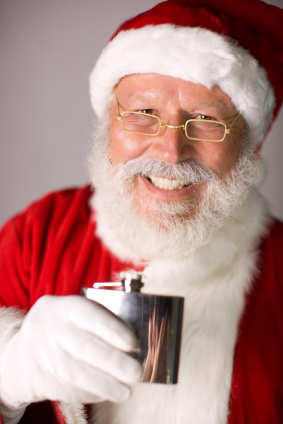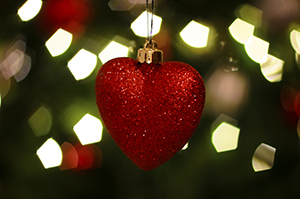
Holiday heart syndrome is a real condition and has been described as such since the 1970s. It’s the result of eating and drinking alcohol too much (with or without excessive caffeine intake and a lack of sleep), which is exactly what we’re inclined to do this time of year. The combination of these indulgences places an undue level of strain on the heart, which causes the heart to develop an abnormal rhythm, most commonly atrial fibrillation. Interestingly, certain foods, alcohol and caffeine all have direct effects on the heart, and indirectly they can also affect the heart through increase of certain hormones (such as epinephrine) that stimulate the heart.
Curiously, holiday heart syndrome is notable for its occurrence in those without existent heart disease but can be especially concerning in uncovering existing disease or exacerbating disease in those having it. For example, someone with underlying cardiovascular disease featuring microclots can have such clots dislodge during an episode of atrial fibrillation, causing a stroke.
Fortunately, by far the common course of holiday heart syndrome is benign. The abnormal heart rates will slowly resolve as the levels and effects of alcohol and/or other substances decline. That said, the risk is such that you don’t just want to sleep off an occurrence.
The symptoms you’d have are pretty obvious, given that you’d have been eating and drinking to excess. You’d also note that your heart was racing and perhaps pounding, as if it was attempting to jump out of your chest. Heart rates in the 120s are pretty typical for holiday heart syndrome (a normal heart rate is between 70-100 beats per minute). This tidbit is important to know; if your heart rate is higher than this, something more serious could be occurring. Under either circumstance, you need to be evaluated and treated in the emergency room setting with hydration and observation of the heart rhythm and rate.

The lessons here are pretty straightforward:
- Holiday heart syndrome suggests that indulgences that occur during the holidays can cause symptoms. By no means does it suggest that these symptoms are restricted to the holidays. Overindulgence in food and drink can cause abnormal heart rhythms at any time, including weekends, spring break, birthday or other celebrations, as well as holidays.
- You’d be particularly interested in knowing that the combination of vodka and the energy drink Red Bull have been shown to make these symptoms more likely to occur.
Following alcohol-related abnormal heart rhythms, it is advisable for patients to avoid significant exertion because the excessive stimulation that raises epinephrine levels can precipitate recurrent and possibly more serious episodes. Most patients without underlying heart disease should be able to gradually resume full physical activity over the next few days. Once everything is back to normal, most patients do not require further therapy if they refrain from alcohol use. Patients with underlying heart disease, heart disease that’s discovered during evaluation, or those with severe symptoms on presentation (e.g., blackouts or simultaneous low blood pressure) may be candidates to receive certain heart medications.

At the end of the day, Holiday Heart Syndrome is yet another example of the virtue of enjoying life in moderation. Failure to do so can turn the holidays into the most dangerous time of the year. Cheers!
Feel free to ask your SMA expert consultant any questions you may have on this topic.
Order your copy of Dr. Sterling’s new book Behind The Curtain: A Peek at Life from within the ER at jeffreysterlingbooks.com, iTunes, Amazon, Barnes and Nobles and wherever books are sold.
Thanks for liking and following Straight, No Chaser! This public service provides a sample of what http://www.SterlingMedicalAdvice.com (SMA) and 844-SMA-TALK offers. Please share our page with your friends on WordPress, like us on Facebook @ SterlingMedicalAdvice.com and follow us on Twitter at @asksterlingmd.
Copyright © 2016 · Sterling Initiatives, LLC · Powered by WordPress


